 Search by Keyword
|
"EVERYBODY'S GOT SOMETHING TO HIDE EXCEPT ME AND MY MONKEY"
(John Lennon – Paul McCartney)
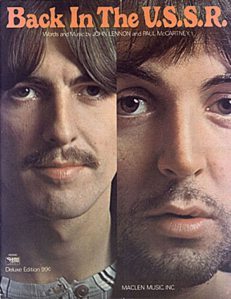 When the biggest rock 'n' roll band in the world decides to get "heavy," the world pays attention. Even many decades later, tracks like "Revolution," "Come Together," "Back In The U.S.S.R.," "Helter Skelter" and "While My Guitar Gently Weeps" get extensive regular airplay on classic rock stations the world over. These songs, among others, have all the required elements to satisfy even the most die-hard "metal" fans used to a steady diet of AC/DC and Guns N' Roses. When the biggest rock 'n' roll band in the world decides to get "heavy," the world pays attention. Even many decades later, tracks like "Revolution," "Come Together," "Back In The U.S.S.R.," "Helter Skelter" and "While My Guitar Gently Weeps" get extensive regular airplay on classic rock stations the world over. These songs, among others, have all the required elements to satisfy even the most die-hard "metal" fans used to a steady diet of AC/DC and Guns N' Roses.
Why is it, then, that other Beatles songs that seemingly have all the same elements get overlooked? Case in point being “Everybody's Got Something To Hide Except Me And My Monkey.” It has loud, rocking and distorted guitar work, a driving tempo, John Lennon's energetic lead vocal bellowing, and the gimmick of a highly distinctive song title, the longest of the entire Beatles catalog. What is there about this song that a “head-banger” wouldn't love? The answer, I submit, is nothing. Well contained within a three-minute package is everything any staunch rocker could want. But for some reason, the masses aren't aware that this song exists. I say that now is the time to finally make it known!
Songwriting History
In 1980, Lennon described the song as "just a, sort of, nice line that I made into a song. It was about me and Yoko. Everybody seemed to be paranoid except for us two, who were in the glow of love. Everything is clear and open when you're in love. Everybody was, sort of, tense around us. You know, 'What is SHE doing here at the session? Why is she with him?' All that sort of madness is going on around us because we just happened to want to be together all the time."
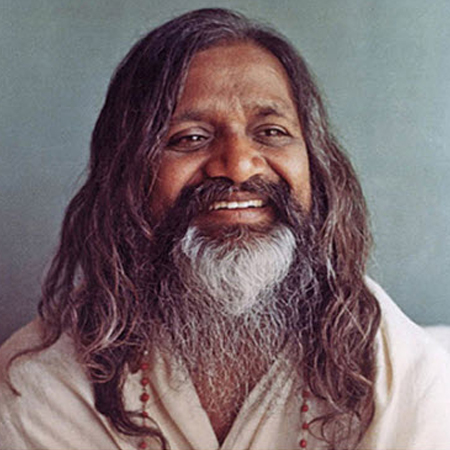 Although it's known that most of the songs contained on the “White Album” were composed during The Beatles' stay in India in the spring of 1968, this song appears to be an exception. Since John explains the song as being written about everyone's reaction to his new love relationship with Yoko, it has been established that their artistic and intimate relationship didn't take root until he returned from India in April of that year. In fact, it has been stipulated that they began their romance on May 19th, 1969 when they recorded their infamous "Two Virgins" album. George Harrison, however, has stated that elements of the lyrics to "Everybody's Got Something To Hide" can easily be attributed to the Maharishi, saying that "Come on is such a joy" was one of his favorite sayings as was the song's title itself, "apart from that bit about the monkey.” However, it appears that these phrases were remembered later and adapted to his new relationship with Yoko. Therefore, the song is estimated to have been written sometime between May 19th and May 28th, 1968, which is the day that John recorded the song's demo, the lyrics and basic structure of the song already being in place. Although it's known that most of the songs contained on the “White Album” were composed during The Beatles' stay in India in the spring of 1968, this song appears to be an exception. Since John explains the song as being written about everyone's reaction to his new love relationship with Yoko, it has been established that their artistic and intimate relationship didn't take root until he returned from India in April of that year. In fact, it has been stipulated that they began their romance on May 19th, 1969 when they recorded their infamous "Two Virgins" album. George Harrison, however, has stated that elements of the lyrics to "Everybody's Got Something To Hide" can easily be attributed to the Maharishi, saying that "Come on is such a joy" was one of his favorite sayings as was the song's title itself, "apart from that bit about the monkey.” However, it appears that these phrases were remembered later and adapted to his new relationship with Yoko. Therefore, the song is estimated to have been written sometime between May 19th and May 28th, 1968, which is the day that John recorded the song's demo, the lyrics and basic structure of the song already being in place.
 While both John and Paul show Lennon as its sole composer, Paul adds his input into some of the song's lyrics. In his book “Many Years From Now,” Paul writes: “He was getting into harder drugs than we'd been into and so his songs were taking on more references to heroin. Until that point we had made rather mild, rather oblique references to pot or LSD. Now John started to be talking about fixes and monkeys and it was a harder terminology which the rest of us weren't into. We were disappointed that he was getting into heroin because we didn't really see how we could help him. We just hoped it wouldn't go too far. In actual fact, he did end up clean but this was the period when he was on it. It was a tough period for John, but often that adversity and that craziness can lead to good art, as I think it did in this case.” While both John and Paul show Lennon as its sole composer, Paul adds his input into some of the song's lyrics. In his book “Many Years From Now,” Paul writes: “He was getting into harder drugs than we'd been into and so his songs were taking on more references to heroin. Until that point we had made rather mild, rather oblique references to pot or LSD. Now John started to be talking about fixes and monkeys and it was a harder terminology which the rest of us weren't into. We were disappointed that he was getting into heroin because we didn't really see how we could help him. We just hoped it wouldn't go too far. In actual fact, he did end up clean but this was the period when he was on it. It was a tough period for John, but often that adversity and that craziness can lead to good art, as I think it did in this case.”
 While a good portion of the lyrics to “Everybody's Got Something To Hide” come across as nonsensical gobledygook, such as “your inside is out, and your outside is in,” other phrases, such as “the deeper you go, the higher you fly,” have easily been interpreted as references to heroin use (although they had been ingesting the drug orally only and not shooting it, as this lyric has implied to some). As for the term “monkey,” John and Paul's explanations, as we see above, contradict each other. Paul insists it was a definite reference to drugs, “monkey on your back” being a '40s and '50s jazz-musician phrase depicting Heroin addiction. John infers it as meaning Yoko, only the two of them not having any hang-ups like everyone else around them did, which included the press and what they were reporting about them at the time. It is convincing either way and may very well have been intended as a double-entendre. While a good portion of the lyrics to “Everybody's Got Something To Hide” come across as nonsensical gobledygook, such as “your inside is out, and your outside is in,” other phrases, such as “the deeper you go, the higher you fly,” have easily been interpreted as references to heroin use (although they had been ingesting the drug orally only and not shooting it, as this lyric has implied to some). As for the term “monkey,” John and Paul's explanations, as we see above, contradict each other. Paul insists it was a definite reference to drugs, “monkey on your back” being a '40s and '50s jazz-musician phrase depicting Heroin addiction. John infers it as meaning Yoko, only the two of them not having any hang-ups like everyone else around them did, which included the press and what they were reporting about them at the time. It is convincing either way and may very well have been intended as a double-entendre.
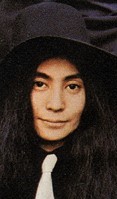 Sexual references have also been suggested, the word “come” in the phrase “come on, it's such a joy” being suspect by many. John's deviant repetition of the phrases “take it, take it, take it” and "make it, make it, make it" at the conclusion of the demo recording of the song suggests this may be the case, as well as his admission that he “was very sexually oriented” during the beginning of his intimate relationship with Yoko at that time. Sexual references have also been suggested, the word “come” in the phrase “come on, it's such a joy” being suspect by many. John's deviant repetition of the phrases “take it, take it, take it” and "make it, make it, make it" at the conclusion of the demo recording of the song suggests this may be the case, as well as his admission that he “was very sexually oriented” during the beginning of his intimate relationship with Yoko at that time.
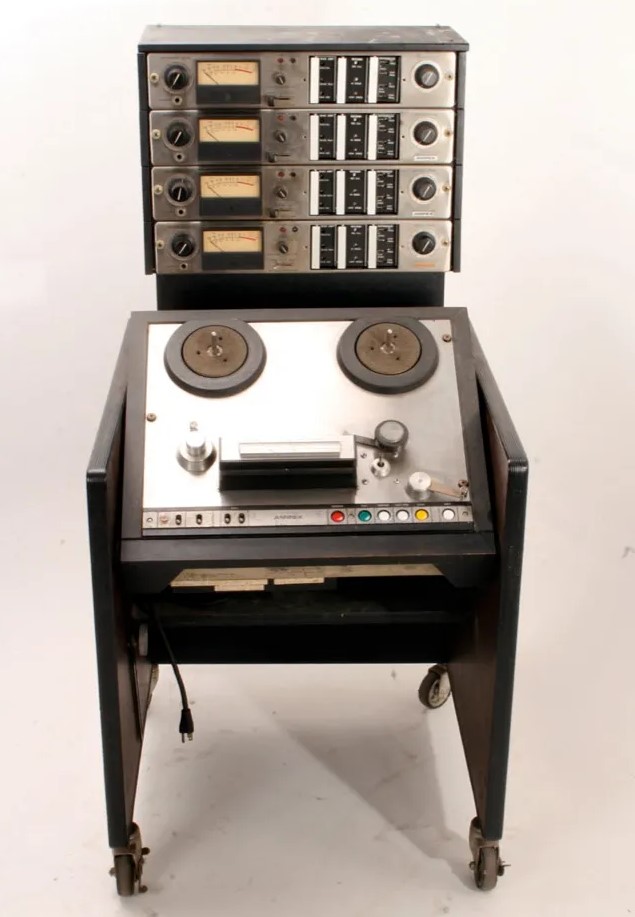
Ampex 4-track tape recorder as used at George Harrisons "Kinfauns" home in Esher in May of 1968
Recording History
 As mentioned above, John introduced the song to the rest of The Beatles on May 28th, 1968, while recording demos of newly written compositions at George's "Kinfauns" home in Esher, Surrey. Onto George's Ampex 4-track machine, John recorded himself singing and playing acoustic guitar, both of which were double-tracked, while the rest of the group added various percussion sounds, such as maracas, tambourine and bongo beats on the back of an acoustic guitar. Another acoustic guitar is also heard in the background playing experimental lead phrases, which could very well have been George. As mentioned above, John introduced the song to the rest of The Beatles on May 28th, 1968, while recording demos of newly written compositions at George's "Kinfauns" home in Esher, Surrey. Onto George's Ampex 4-track machine, John recorded himself singing and playing acoustic guitar, both of which were double-tracked, while the rest of the group added various percussion sounds, such as maracas, tambourine and bongo beats on the back of an acoustic guitar. Another acoustic guitar is also heard in the background playing experimental lead phrases, which could very well have been George.
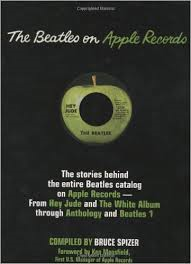 Both the general tempo and all around 'vibe' were already present, as were the complete lyrics, although the vocal style lends itself more to Bob Dylan than to the high intensity vocalizations of the finished product. Some arrangement issues still needed to be worked out, such as the introduction and the details of the guitar parts, but the somewhat ad lib nature of the song was already in place. As Bruce Spizer states in his book “The Beatles On Apple Records,” “One can sense that the group was looking forward to recording this one.” Both the general tempo and all around 'vibe' were already present, as were the complete lyrics, although the vocal style lends itself more to Bob Dylan than to the high intensity vocalizations of the finished product. Some arrangement issues still needed to be worked out, such as the introduction and the details of the guitar parts, but the somewhat ad lib nature of the song was already in place. As Bruce Spizer states in his book “The Beatles On Apple Records,” “One can sense that the group was looking forward to recording this one.”
 This proved to be the case. Out of the 30 songs that appeared on the released “White Album,” “Everybody's Got Something To Hide” was the fifth song to be started. They began working on the song on June 26th, 1968, in EMI Studio Two at approximately 7 pm. Mark Lewisohn, in his book “The Beatles Recording Sessions,” explains their new approach to recording that was now being instituted since they had time on their hands, this being to “rehearse and rehearse and rehearse, with everything recorded, but then – in most instances (but not in this one, as we'll discover below) – instead of spooling back to record proper over the rehearsals, treat the rehearsals themselves as the recordings, all takes numbered. Then, in the familiar fashion, go back to the best basic version and start the process of overdubbing.” This proved to be the case. Out of the 30 songs that appeared on the released “White Album,” “Everybody's Got Something To Hide” was the fifth song to be started. They began working on the song on June 26th, 1968, in EMI Studio Two at approximately 7 pm. Mark Lewisohn, in his book “The Beatles Recording Sessions,” explains their new approach to recording that was now being instituted since they had time on their hands, this being to “rehearse and rehearse and rehearse, with everything recorded, but then – in most instances (but not in this one, as we'll discover below) – instead of spooling back to record proper over the rehearsals, treat the rehearsals themselves as the recordings, all takes numbered. Then, in the familiar fashion, go back to the best basic version and start the process of overdubbing.”
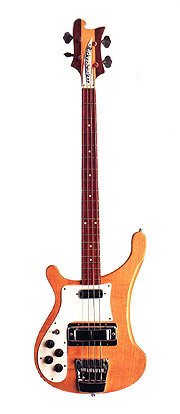 On this day, The Beatles worked hard at familiarizing themselves with the song and working out an arrangement. The tape was rolling the whole time, the intention being to eventually commit to tape a usuable rhythm track onto which they could add overdubs. This four-track tape consisted of John and George's electric guitars on tracks one and two, Paul's bass on track three and Ringo's drums on track four. No vocals were sung at this point with the exception of possible off-microphone guide vocals from John to steer the song in the right direction. With no vocals being sung, EMI staff simply documented the song as "Untitled" at this point. By 3:30 am the next morning, they thought they may have nailed down a suitable rhythm track but, due to the lateness of the hour, decided to end the session and sort through the takes on another day. Therefore, the recording sheet contained the words “Various takes; best to be decided.” On this day, The Beatles worked hard at familiarizing themselves with the song and working out an arrangement. The tape was rolling the whole time, the intention being to eventually commit to tape a usuable rhythm track onto which they could add overdubs. This four-track tape consisted of John and George's electric guitars on tracks one and two, Paul's bass on track three and Ringo's drums on track four. No vocals were sung at this point with the exception of possible off-microphone guide vocals from John to steer the song in the right direction. With no vocals being sung, EMI staff simply documented the song as "Untitled" at this point. By 3:30 am the next morning, they thought they may have nailed down a suitable rhythm track but, due to the lateness of the hour, decided to end the session and sort through the takes on another day. Therefore, the recording sheet contained the words “Various takes; best to be decided.”
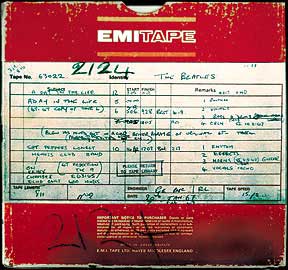 The following day, June 27th, 1968, they re-entered EMI Studio Two at the documented time of 5 pm to continue work on the song. A decision was made, however, to treat the previous day's attempts as rehearsals and start the song again fresh. Common practice at EMI was, to conserve expensive recording tape, to re-record over performances that were deemed unsuitable for release. In this case, the tape that contained the previous day's rehearsals was used again on this day to record the rhythm track for the song, totally wiping out the performances from the previous day. The following day, June 27th, 1968, they re-entered EMI Studio Two at the documented time of 5 pm to continue work on the song. A decision was made, however, to treat the previous day's attempts as rehearsals and start the song again fresh. Common practice at EMI was, to conserve expensive recording tape, to re-record over performances that were deemed unsuitable for release. In this case, the tape that contained the previous day's rehearsals was used again on this day to record the rhythm track for the song, totally wiping out the performances from the previous day.
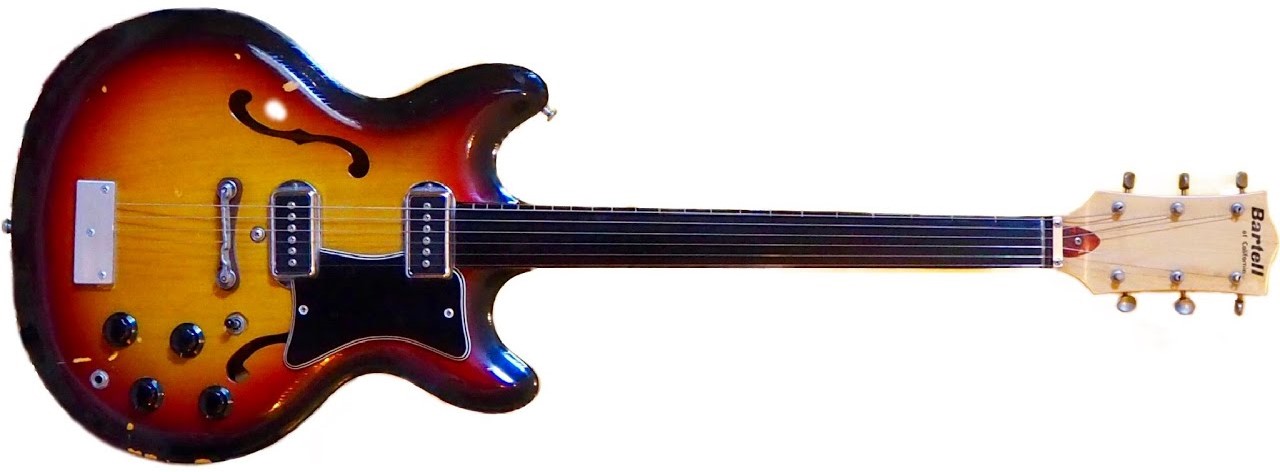 Or so everyone thought! Sometime in 2018, while the 50th Anniversary "White Album" releases were being prepared, it was discovered that the last three minutes of that reel of tape still contained the previous day's rehearsal of "Everybody's Got Something To Hide." This rough instrumental performance, with John playing a strict rhythm pattern and George experimenting with lead guitar passages on a newly acquired Bartell fretless electric guitar prototype, gives a "fly on the wall" view of how the song was taking shape, transitioning from the acoustic demo of May 28th to the scorching rocker contained on the released album. This discovery was contained on the Super Deluxe "White Album" box set released in November of 2018. Or so everyone thought! Sometime in 2018, while the 50th Anniversary "White Album" releases were being prepared, it was discovered that the last three minutes of that reel of tape still contained the previous day's rehearsal of "Everybody's Got Something To Hide." This rough instrumental performance, with John playing a strict rhythm pattern and George experimenting with lead guitar passages on a newly acquired Bartell fretless electric guitar prototype, gives a "fly on the wall" view of how the song was taking shape, transitioning from the acoustic demo of May 28th to the scorching rocker contained on the released album. This discovery was contained on the Super Deluxe "White Album" box set released in November of 2018.
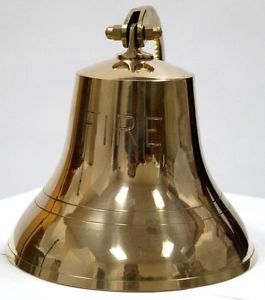 Engineer Geoff Emerick recalls this second day of recording "Everybody's Got Something To Hide" as a “very long, wearying session.” In his book “Here, There And Everywhere,” he elaborates: “The group began work on yet another harsh, aggressive Lennon song...Once again, The Beatles were playing incredibly loud down in the studio, but this time Lennon and Harrison had their volume turned up so high that Paul actually gave up competing with them. Rather than play bass on the backing track, he stood next to Ringo, ringing a huge fireman's bell, egging his drummer on. There was no microphone on him, because the thing was so loud that it bled on all the mics anyway. Physically, it was very difficult to pull off – Paul had to take a break after each take because his shoulders were aching so much.” Engineer Geoff Emerick recalls this second day of recording "Everybody's Got Something To Hide" as a “very long, wearying session.” In his book “Here, There And Everywhere,” he elaborates: “The group began work on yet another harsh, aggressive Lennon song...Once again, The Beatles were playing incredibly loud down in the studio, but this time Lennon and Harrison had their volume turned up so high that Paul actually gave up competing with them. Rather than play bass on the backing track, he stood next to Ringo, ringing a huge fireman's bell, egging his drummer on. There was no microphone on him, because the thing was so loud that it bled on all the mics anyway. Physically, it was very difficult to pull off – Paul had to take a break after each take because his shoulders were aching so much.”
Geoff Emerick doesn't pull any punches concerning his feelings about the song, but admits some admirable qualities. “As much as I disliked the song, I had to admit that it was the first time in any of the 'White Album' sessions that there was any energy in their playing. George Harrison's lead work was crisp and efficient, much more aggressive than his usual style.”
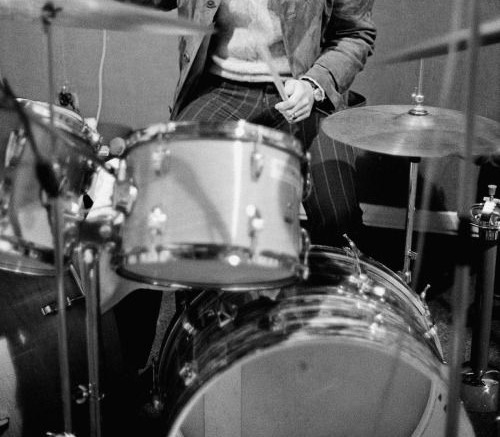 Six takes of the rhythm track were recorded on this day, these consisting of John and George's guitars on tracks one and two with Ringo's drums on track three along with Paul on the above mentioned fireman's bell but sometimes switching to a Brazillian percussion instrument he found in the sound effects cupboard called a chocalho. Paul would also whoop and hollar to encourage his bandmates during the takes, one of which ending with him joking, "Don't stop me now!" The book "The Beatles Recording Sessions" indicates that "take six" was deemed best and ready for overdubs. Six takes of the rhythm track were recorded on this day, these consisting of John and George's guitars on tracks one and two with Ringo's drums on track three along with Paul on the above mentioned fireman's bell but sometimes switching to a Brazillian percussion instrument he found in the sound effects cupboard called a chocalho. Paul would also whoop and hollar to encourage his bandmates during the takes, one of which ending with him joking, "Don't stop me now!" The book "The Beatles Recording Sessions" indicates that "take six" was deemed best and ready for overdubs.
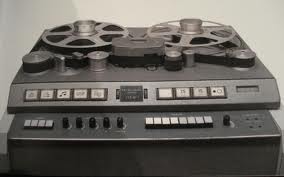 However, as the above book stipulates, a decision was made to perform two reduction mixes for this song, the second attempt, "take eight," being deemed best. This reduction mix was created while the tape machine was running at 43 cycles per second instead of the usual 50, which meant it sped the song up considerably when played back. This shortened the song from 3:07 to 2:29 and gave the impression of a tighter instrumental performance, this possibly being the only reason the reduction mix was deemed necessary. This ended the session at about 3:45 the following morning, leaving for another day the decision as to what they would fill the open fourth track with. However, as the above book stipulates, a decision was made to perform two reduction mixes for this song, the second attempt, "take eight," being deemed best. This reduction mix was created while the tape machine was running at 43 cycles per second instead of the usual 50, which meant it sped the song up considerably when played back. This shortened the song from 3:07 to 2:29 and gave the impression of a tighter instrumental performance, this possibly being the only reason the reduction mix was deemed necessary. This ended the session at about 3:45 the following morning, leaving for another day the decision as to what they would fill the open fourth track with.
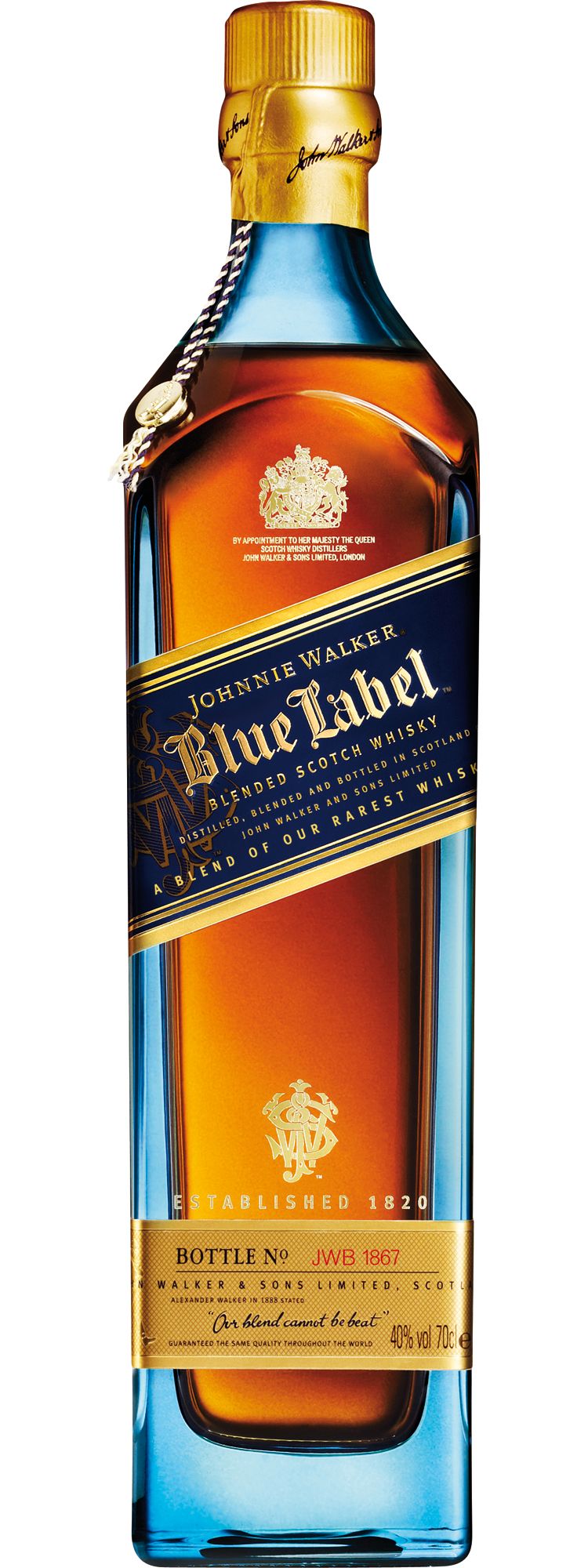 As a sidenote, Geoff Emerick explained interesting developments that occurred after the session was complete: “Needless to say, by the time the track was completed (for the day), I had a splitting headache. That evening, Paul had walked into the control room on his way in and unceremoniously plunked a bottle of Johnnie Walker down on the table, saying, 'This is for you, boys.'...(Engineer Richard Lush and I) restrained ourselves until after everyone had gone home, at which point we drained the entire bottle...Giggling like the drunken fools we were, we got every last cup and saucer out of the canteen and took them into Studio Two, whereupon we smashed them up against the wall. Of course, we then had to hide the evidence. But it was worth it. The next morning the canteen staff came in and wanted to know where all the cups and saucers had gone. Fighting our hangovers and trying to appear as angelic as humanly possible, we pleaded innocence.” As a sidenote, Geoff Emerick explained interesting developments that occurred after the session was complete: “Needless to say, by the time the track was completed (for the day), I had a splitting headache. That evening, Paul had walked into the control room on his way in and unceremoniously plunked a bottle of Johnnie Walker down on the table, saying, 'This is for you, boys.'...(Engineer Richard Lush and I) restrained ourselves until after everyone had gone home, at which point we drained the entire bottle...Giggling like the drunken fools we were, we got every last cup and saucer out of the canteen and took them into Studio Two, whereupon we smashed them up against the wall. Of course, we then had to hide the evidence. But it was worth it. The next morning the canteen staff came in and wanted to know where all the cups and saucers had gone. Fighting our hangovers and trying to appear as angelic as humanly possible, we pleaded innocence.”
 The Beatles entered EMI Studio Two on July 1st, 1968 at 5 pm with the intention of finishing the song, which finally was documented as being called “Everybody's Got Something To Hide Except Me And My Monkey.” Onto "take eight," Paul put in two attempts at a bass guitar overdub. “The bass part Paul overdubbed on was good,” related Geoff Emerick. “Clearly he was still determined to do his best, no matter what was going on between him and John.” With Paul's bass overdub recorded onto track four, the four-track tape was now full and, since John hadn't yet recorded his lead vocals, another reduction mix was needed. "Take nine" was the result, which combined John and George's guitars onto track one and the drums, bass and percussion on track two. John then overdubbed lead vocals along with some additional drums from Ringo on track three, followed by John double-tracking his vocals on track four. The Beatles entered EMI Studio Two on July 1st, 1968 at 5 pm with the intention of finishing the song, which finally was documented as being called “Everybody's Got Something To Hide Except Me And My Monkey.” Onto "take eight," Paul put in two attempts at a bass guitar overdub. “The bass part Paul overdubbed on was good,” related Geoff Emerick. “Clearly he was still determined to do his best, no matter what was going on between him and John.” With Paul's bass overdub recorded onto track four, the four-track tape was now full and, since John hadn't yet recorded his lead vocals, another reduction mix was needed. "Take nine" was the result, which combined John and George's guitars onto track one and the drums, bass and percussion on track two. John then overdubbed lead vocals along with some additional drums from Ringo on track three, followed by John double-tracking his vocals on track four.
With the four tracks of the tape full yet again, another reduction mix was deemed necessary for some reason. This reduction mix, "take 10," was 2:18 in length and was documented as best, which ended the session on this day at 3 am.
 A decision needed to be made, however, concerning how the song would be concluded. Therefore, when The Beatles convened in EMI Studio Two on July 23rd, 1968 at around 7 pm, John implemented his idea. The book "The Beatles Recording Sessions" describes the replacement lead vocal that John now recorded onto "take 10" as "a rousing new Lennon version which, after the point where he knew the song would be faded out on disc, developed into frantic, jocular screaming." Engineer Richard Lush explains: "As usual, John was wanting his voice to sound different. He would say, 'I want to sound like somebody from the moon' or anything different. 'Make it different!' And at that time there wasn't the range of instant effects available today." A decision needed to be made, however, concerning how the song would be concluded. Therefore, when The Beatles convened in EMI Studio Two on July 23rd, 1968 at around 7 pm, John implemented his idea. The book "The Beatles Recording Sessions" describes the replacement lead vocal that John now recorded onto "take 10" as "a rousing new Lennon version which, after the point where he knew the song would be faded out on disc, developed into frantic, jocular screaming." Engineer Richard Lush explains: "As usual, John was wanting his voice to sound different. He would say, 'I want to sound like somebody from the moon' or anything different. 'Make it different!' And at that time there wasn't the range of instant effects available today."
 A reduction mix was once again needed, this being labeled "take 12" which combined John's two vocal tracks and Ringo's additional drums onto track four. Onto the now open track three, John added yet another lead vocal track along with "jocular screaming" at the end of the song, thus layering assorted screams of “come on” on top of each other, as well as handclaps. This, then, completed the song, five mono mixes being made at the end of the session, although none of them were ever used. After some mono mixes of John's song “Good Night” were done, they finally called it a night at 2:30 am the next morning. A reduction mix was once again needed, this being labeled "take 12" which combined John's two vocal tracks and Ringo's additional drums onto track four. Onto the now open track three, John added yet another lead vocal track along with "jocular screaming" at the end of the song, thus layering assorted screams of “come on” on top of each other, as well as handclaps. This, then, completed the song, five mono mixes being made at the end of the session, although none of them were ever used. After some mono mixes of John's song “Good Night” were done, they finally called it a night at 2:30 am the next morning.
 Both the stereo and mono mixes of the song that were released on the finished album were made on October 12th, 1968 in the control room of EMI Studio Two by the engineering team of George Martin, Ken Scott and John Smith. Only one attempt at each mix was needed to get them ready for release, although in both cases, it is thought that the song was sped up yet a little more to reduce its length by a few seconds (to 2:24). The only notable difference between the stereo and mono mixes is the “come on” screaming at the end which varies somewhat. Both the stereo and mono mixes of the song that were released on the finished album were made on October 12th, 1968 in the control room of EMI Studio Two by the engineering team of George Martin, Ken Scott and John Smith. Only one attempt at each mix was needed to get them ready for release, although in both cases, it is thought that the song was sped up yet a little more to reduce its length by a few seconds (to 2:24). The only notable difference between the stereo and mono mixes is the “come on” screaming at the end which varies somewhat.
 Sometime in 2018, George Martin's son Giles Martin, along with engineer Sam Okell, returned to the master tapes to create an excellent new stereo mix of the song for inclusion on the various new editions of the "White Album" for its 50th Anniversary. They also created a stereo mix of the Esher demo they made on May 28th, 1968 and the newly discovered rehearsal segment the band recorded in EMI Studios on June 26th of that year. Sometime in 2018, George Martin's son Giles Martin, along with engineer Sam Okell, returned to the master tapes to create an excellent new stereo mix of the song for inclusion on the various new editions of the "White Album" for its 50th Anniversary. They also created a stereo mix of the Esher demo they made on May 28th, 1968 and the newly discovered rehearsal segment the band recorded in EMI Studios on June 26th of that year.
Song Structure and Style
The overall structure of the song is quite usual for Lennon / McCartney compositions, namely 'verse/ refrain/ verse/ refrain/ verse/ refrain' (or ababab) with an introduction and conclusion to round things out. But, as we've come to expect, there are some interesting developments that come up along the way.
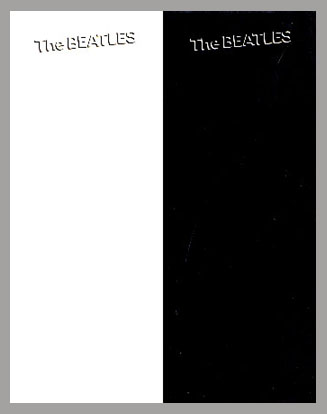 Getting your grounding in the introduction may be a little difficult for the listener, as it was for me for many years, because of Lennon's three guitar chops per measure and deceivingly placed snare beats from Ringo. So, where exactly is the downbeat of the song? It's simpler than you think. The first bass drum beat of the song is the actual downbeat, which reveals that John's guitar chops are syncopated instead of on the quarter-note beats. This all sets in motion this tricky little four measure intro with John and Ringo being the only instrumentalists heard, apart from audible handclaps overdubbed by either John, Paul, or both. Getting your grounding in the introduction may be a little difficult for the listener, as it was for me for many years, because of Lennon's three guitar chops per measure and deceivingly placed snare beats from Ringo. So, where exactly is the downbeat of the song? It's simpler than you think. The first bass drum beat of the song is the actual downbeat, which reveals that John's guitar chops are syncopated instead of on the quarter-note beats. This all sets in motion this tricky little four measure intro with John and Ringo being the only instrumentalists heard, apart from audible handclaps overdubbed by either John, Paul, or both.
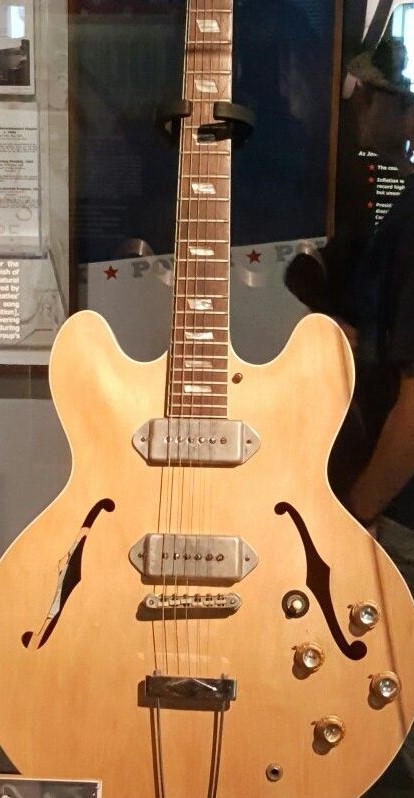 We then enter into the first verse which is six measures long and played by all four members of the band. The verse makes a jarring appearance with John's high pitched “come on, come on” vocal, Paul's piercing fireman's bell and booming bass guitar, George's rhythmic lead guitar lines and Ringo's straightforward 4/4 drum beat. John's syncopated guitar work is still in full view throughout, but now as a backdrop to the other elements that take center stage. We then enter into the first verse which is six measures long and played by all four members of the band. The verse makes a jarring appearance with John's high pitched “come on, come on” vocal, Paul's piercing fireman's bell and booming bass guitar, George's rhythmic lead guitar lines and Ringo's straightforward 4/4 drum beat. John's syncopated guitar work is still in full view throughout, but now as a backdrop to the other elements that take center stage.
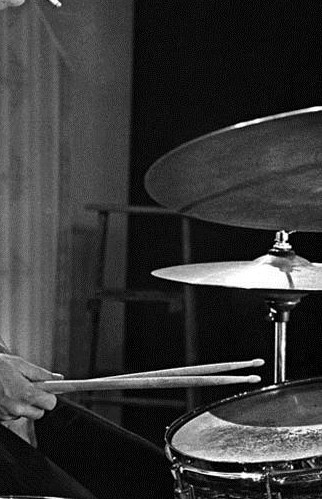 Next comes the first refrain which is ten measures long. These refrains can all be described as having two sections, the first six measures being in straight 4/4 time, and the final four measures which alternate twice between 3/4 and then 4/4 time. The first section consists of John's “take it easy” vocals followed by the song's title (actually adding one word, making it “except for me and my monkey”) while both John and George play eighth-note power chord chops. Paul sticks to single-note bass playing along with the guitars as well as keeping up his effective bell ringing, while Ringo steps up his drum beat by accenting the snare on every quarter note. Next comes the first refrain which is ten measures long. These refrains can all be described as having two sections, the first six measures being in straight 4/4 time, and the final four measures which alternate twice between 3/4 and then 4/4 time. The first section consists of John's “take it easy” vocals followed by the song's title (actually adding one word, making it “except for me and my monkey”) while both John and George play eighth-note power chord chops. Paul sticks to single-note bass playing along with the guitars as well as keeping up his effective bell ringing, while Ringo steps up his drum beat by accenting the snare on every quarter note.
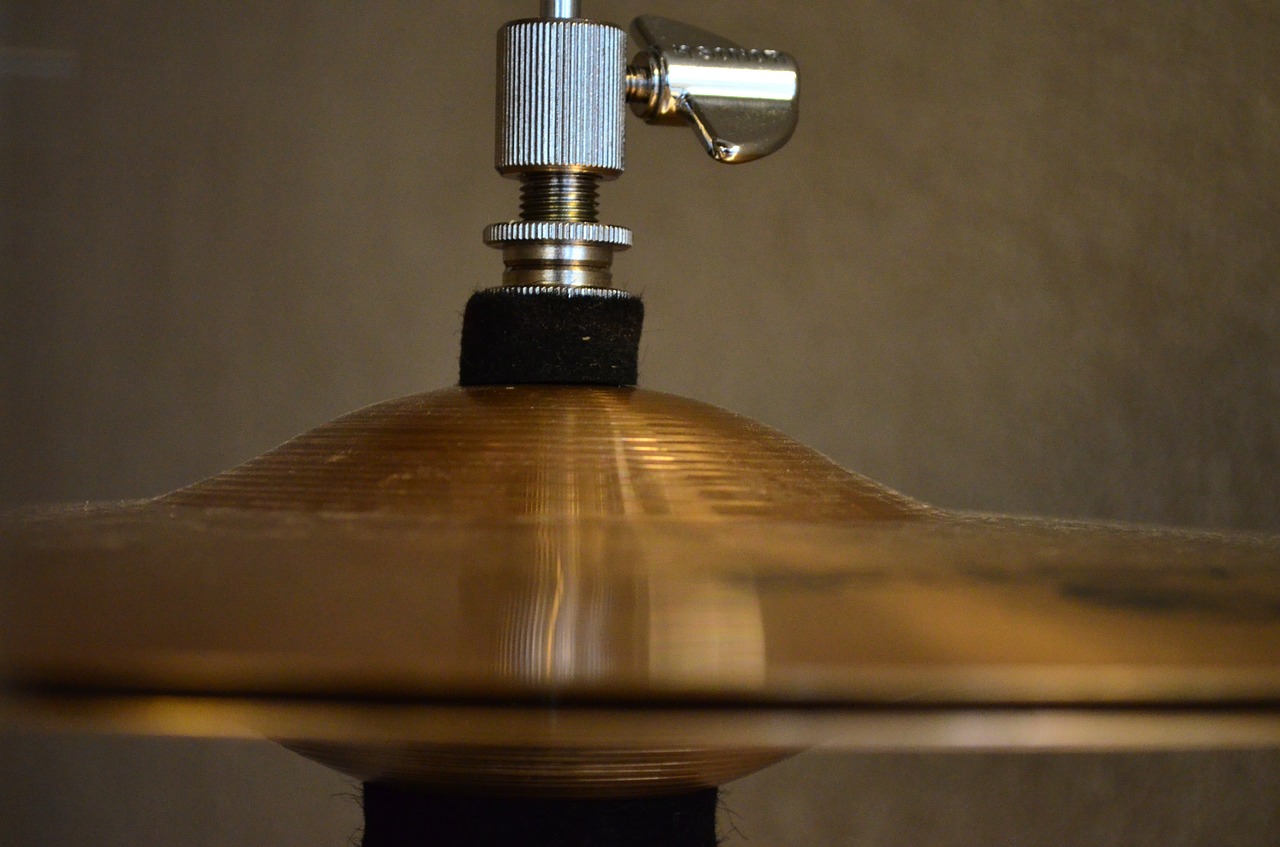 The second section, which comes in precisely on the word “monkey,” introduces a break in the energetic tension of the song thus far. George plays two inventive guitar riffs which stand out beautifully, both of which fill up both of the 3/4 time measures (seven and nine) while John's rhythm guitar, Paul's bass, and Ringo's bass drum and open hi-hat crashes accent a perfect triplet pattern for these same measures. Measures eight and ten (which are both in 4/4 time) consist of four strategic snare drum beats from Ringo. The only other element this time around is a blood-curdling scream from Paul which takes us directly into the next verse. The second section, which comes in precisely on the word “monkey,” introduces a break in the energetic tension of the song thus far. George plays two inventive guitar riffs which stand out beautifully, both of which fill up both of the 3/4 time measures (seven and nine) while John's rhythm guitar, Paul's bass, and Ringo's bass drum and open hi-hat crashes accent a perfect triplet pattern for these same measures. Measures eight and ten (which are both in 4/4 time) consist of four strategic snare drum beats from Ringo. The only other element this time around is a blood-curdling scream from Paul which takes us directly into the next verse.
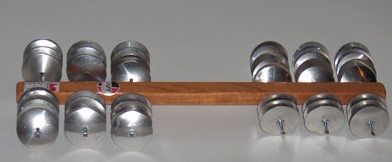 The second verse is different from the first verse in a few ways, the most noteworthy being the addition of four measures at the beginning, this verse now totaling ten. These measures are added in order to include additional lyrics, this time being “the deeper you go, the higher you fly,” and of course, the opposite of that sentiment is apparently true as well. Instrumental differences include Paul's replacing the bell with the chocalho and Ringo adding an additional snare drum beat in each of these first four measures. After this, the remaining measures are similar to those heard in the previous verse. However, differences are heard in the interesting variations of George's lead guitar lines as well as the slight change in lyrics, from “come on is take it easy” to “come on is make it easy.” Not to be forgotten is the quick “whoo” from Paul at the tail end of the final measure. The second verse is different from the first verse in a few ways, the most noteworthy being the addition of four measures at the beginning, this verse now totaling ten. These measures are added in order to include additional lyrics, this time being “the deeper you go, the higher you fly,” and of course, the opposite of that sentiment is apparently true as well. Instrumental differences include Paul's replacing the bell with the chocalho and Ringo adding an additional snare drum beat in each of these first four measures. After this, the remaining measures are similar to those heard in the previous verse. However, differences are heard in the interesting variations of George's lead guitar lines as well as the slight change in lyrics, from “come on is take it easy” to “come on is make it easy.” Not to be forgotten is the quick “whoo” from Paul at the tail end of the final measure.
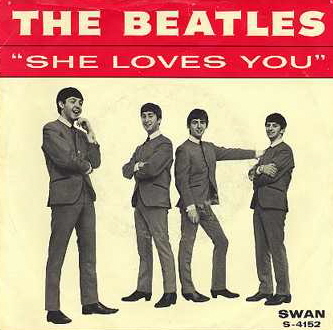 Then appears another refrain which is quite similar to the first with a few minor exceptions. The chocalho continues to be heard as in the second verse instead of the bell from the first refrain. A faint voice is heard in the second measure saying “yeah, yeah, yeah” (a “She Loves You” reference?) and a “Woah!” from Paul appears at the beginning of the fourth measure. Lennon then sings “monkey, yeah” in the seventh measure while Paul retorts with a falsetto “woooo” at the end of the eighth measure. And there is no blood-curdling scream at the end this time around. Then appears another refrain which is quite similar to the first with a few minor exceptions. The chocalho continues to be heard as in the second verse instead of the bell from the first refrain. A faint voice is heard in the second measure saying “yeah, yeah, yeah” (a “She Loves You” reference?) and a “Woah!” from Paul appears at the beginning of the fourth measure. Lennon then sings “monkey, yeah” in the seventh measure while Paul retorts with a falsetto “woooo” at the end of the eighth measure. And there is no blood-curdling scream at the end this time around.
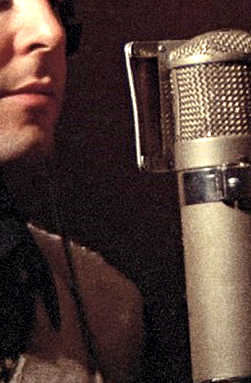 Then comes verse three, which is also ten measures long and is virtually identical instrumentally to the second verse except for Paul putting down the chocalho and picking up the fireman's bell again. “Your inside is out and your outside is in” are now the words of wisdom from Lennon, the reverse of course also being the case. Paul interjects a couple shouts of “Ho!” in measures five and six respectively, as well as mumbling some faintly heard contributions in the measures that follow. John decides the listener should be encouraged to “make it easy” once again this time around. Then comes verse three, which is also ten measures long and is virtually identical instrumentally to the second verse except for Paul putting down the chocalho and picking up the fireman's bell again. “Your inside is out and your outside is in” are now the words of wisdom from Lennon, the reverse of course also being the case. Paul interjects a couple shouts of “Ho!” in measures five and six respectively, as well as mumbling some faintly heard contributions in the measures that follow. John decides the listener should be encouraged to “make it easy” once again this time around.
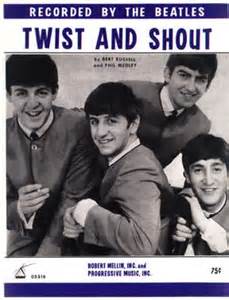 The final refrain then appears, which is also quite similar to the second refrain right down to Paul surprisingly putting down the fireman's bell and once again picking up the chocalho (his shoulders were probably starting to give out). With John singing at the top of his range, we can begin to hear the strain in his vocal chords, not unlike his performance five years earlier in “Twist And Shout.” He does decide this time around that it's important to both “make it easy” and “take it easy,” while Paul follows each of these commands with “wooaahh”s of different lengths. The eighth and tenth measures feature a “Hey!” shout from John while the tenth measure features a high pitched wail from Paul along with the beginning of the “come on” overdubbed repetitions that repeat endlessly until the song fades away. The final refrain then appears, which is also quite similar to the second refrain right down to Paul surprisingly putting down the fireman's bell and once again picking up the chocalho (his shoulders were probably starting to give out). With John singing at the top of his range, we can begin to hear the strain in his vocal chords, not unlike his performance five years earlier in “Twist And Shout.” He does decide this time around that it's important to both “make it easy” and “take it easy,” while Paul follows each of these commands with “wooaahh”s of different lengths. The eighth and tenth measures feature a “Hey!” shout from John while the tenth measure features a high pitched wail from Paul along with the beginning of the “come on” overdubbed repetitions that repeat endlessly until the song fades away.
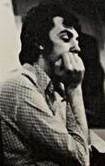 The conclusion comes next which fades out at what would be the 13th measure. The first measure begins with a thud from the guitars and bass while the drums and the re-emerging fireman's bell keep the beat going through the first three measures. The third measure, however, features Paul's bass with a simple but fluent riff to take us to the fourth through sixth measures, these comprising fast paced guitar chording and bass notes only (no percussion at all). Then we are treated to a reprise of the rhythm track similar to what was heard in the first verse, fireman's bell and all. All the while, remember, John and Paul are saying, shouting and screaming “come on” overdubbed over and over again to great effect. The conclusion comes next which fades out at what would be the 13th measure. The first measure begins with a thud from the guitars and bass while the drums and the re-emerging fireman's bell keep the beat going through the first three measures. The third measure, however, features Paul's bass with a simple but fluent riff to take us to the fourth through sixth measures, these comprising fast paced guitar chording and bass notes only (no percussion at all). Then we are treated to a reprise of the rhythm track similar to what was heard in the first verse, fireman's bell and all. All the while, remember, John and Paul are saying, shouting and screaming “come on” overdubbed over and over again to great effect.
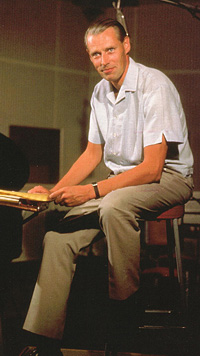 As stated elsewhere in this review, all four Beatles are in top form on this highly underrated song. Lennon only pushes the limits of his vocal range when he feels a particular song merits it, and thus he does here, only resorting to falsetto on the words “to hide” whenever the song's title is sung. There was no need for George Martin to add any piano or hire any outside instrumentation, such as brass players, to make this song come alive. It's pure Beatles at their energetic finest! As stated elsewhere in this review, all four Beatles are in top form on this highly underrated song. Lennon only pushes the limits of his vocal range when he feels a particular song merits it, and thus he does here, only resorting to falsetto on the words “to hide” whenever the song's title is sung. There was no need for George Martin to add any piano or hire any outside instrumentation, such as brass players, to make this song come alive. It's pure Beatles at their energetic finest!
American Releases
On November 25th, 1968, the long awaited double-album entitled "The Beatles," affectionately known as the "White Album," was released in the US. "Everybody's Got Something To Hide" fit in perfectly on side three, which had a primary theme of high energy rockers. The album was first released on compact disc on August 24th, 1987, then as a 30th Anniversary limited edition release on November 23rd, 1998, and then as a remastered CD set on November 9th, 2009. The first mono vinyl version of the album didn't hit American shores until September 9th, 2014. A vibrant new stereo mix of the album was released on vinyl on November 9th, 2018 to commemorate its 50th Anniversary.
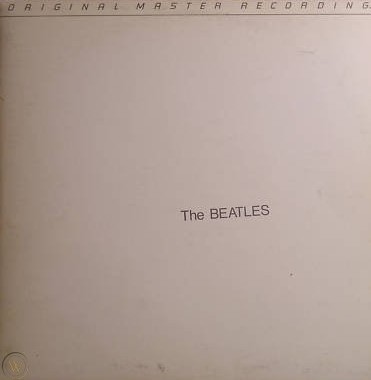 An interesting US vinyl edition of the “White Album” was released on January 7th, 1982, this being manufactured by Mobile Fidelity Sound Lab in Chatsworth, California as part of their "Original Master Recording" series. Their practice was to prepare a new master utilizing half-speed mastering technology from the original master tapes, in this case using the leased sub-master from Capitol Records. This release, which sounded superior to to all previous British and American pressings, was packaged in a non-embossed unnumbered cover that did not include the usual poster/lyric sheet or individual Beatles portraits as contained in standard releases. Nonetheless, this excellent edition of the album was only available for a short time and is quite collectible today. An interesting US vinyl edition of the “White Album” was released on January 7th, 1982, this being manufactured by Mobile Fidelity Sound Lab in Chatsworth, California as part of their "Original Master Recording" series. Their practice was to prepare a new master utilizing half-speed mastering technology from the original master tapes, in this case using the leased sub-master from Capitol Records. This release, which sounded superior to to all previous British and American pressings, was packaged in a non-embossed unnumbered cover that did not include the usual poster/lyric sheet or individual Beatles portraits as contained in standard releases. Nonetheless, this excellent edition of the album was only available for a short time and is quite collectible today.
 The first time the mono version of the song was released in the states, however, was on compact disc within the box set “The Beatles In Mono,” which was released on September 9th, 2009. The vinyl edition was first released on September 9th, 2014. The first time the mono version of the song was released in the states, however, was on compact disc within the box set “The Beatles In Mono,” which was released on September 9th, 2009. The vinyl edition was first released on September 9th, 2014.
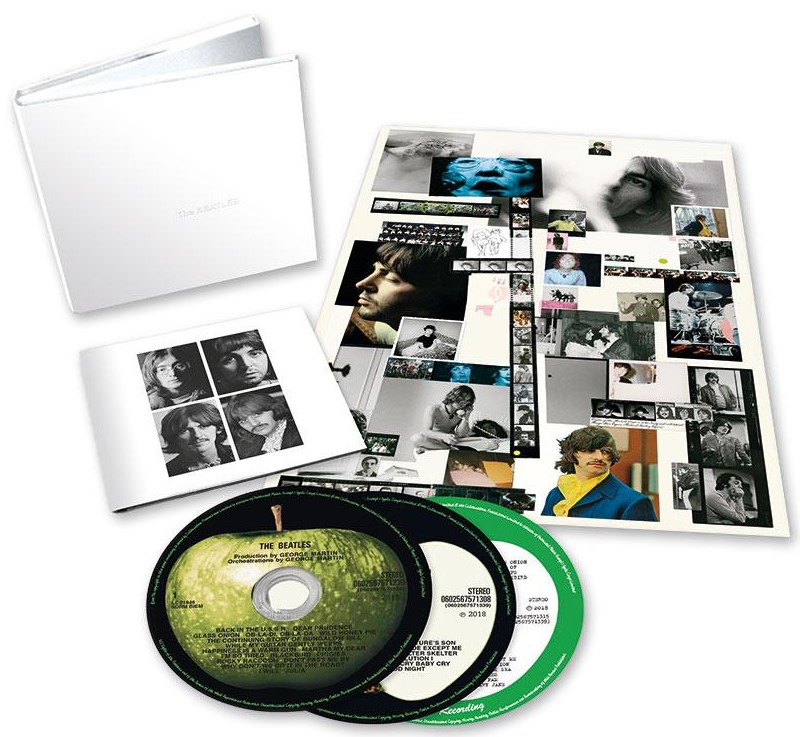 Various editions of the "White Album" were released on November 9th, 2018 to commemorate the 50th Anniversary of its original release. The "Deluxe" edition, which was made available in a 3CD set and a limited edition 180-gram 4LP vinyl set, contained the newly created Giles Martin mix of the "White Album" as well as the complete set of Esher demos that The Beatles recorded in late May of 1968. The "Super Deluxe" 6CD + 1Blu-ray edition also contains the newly discovered rehearsal segment of "Everybody's Got Something To Hide" as recorded on June 26th, 1968. Various editions of the "White Album" were released on November 9th, 2018 to commemorate the 50th Anniversary of its original release. The "Deluxe" edition, which was made available in a 3CD set and a limited edition 180-gram 4LP vinyl set, contained the newly created Giles Martin mix of the "White Album" as well as the complete set of Esher demos that The Beatles recorded in late May of 1968. The "Super Deluxe" 6CD + 1Blu-ray edition also contains the newly discovered rehearsal segment of "Everybody's Got Something To Hide" as recorded on June 26th, 1968.
Live Performances
There were never any live performances of the song by The Beatles collectively or individually, this being one of many compositions the group never touched again after their initial recording. A shame, really!
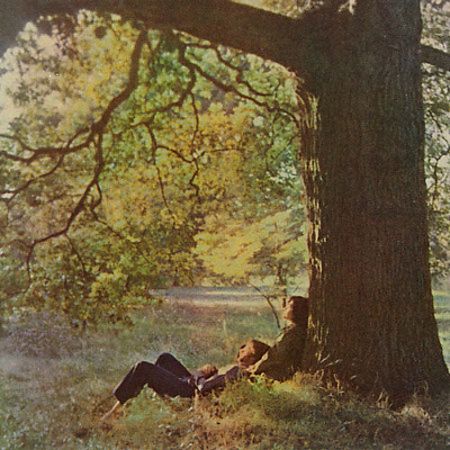
John Lennon's "Plastic Ono Band" album
Conclusion
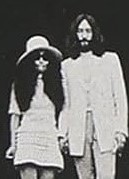 “I just believe in me / Yoko and me / and that's reality!” This sentiment as expressed in the lyrics of the song “God” from John's 1970 album “Plastic Ono Band” is typical of how the couple truly felt about themselves, especially early in their romantic relationship. In the song, John renounces belief in everything he once may have held near and dear to his heart, revealing that his love for Yoko was the only thing he felt was truly real. This "you and me against the world" mentality permeates Lennon's solo career but was first expressed to the world within this “White Album” rocker. In his mind, the entire world had their own hang-ups to deal with, but only Yoko and himself were above the delusions, exposed naked for everyone to see. Metaphorically as well as literally, as it turned out! “I just believe in me / Yoko and me / and that's reality!” This sentiment as expressed in the lyrics of the song “God” from John's 1970 album “Plastic Ono Band” is typical of how the couple truly felt about themselves, especially early in their romantic relationship. In the song, John renounces belief in everything he once may have held near and dear to his heart, revealing that his love for Yoko was the only thing he felt was truly real. This "you and me against the world" mentality permeates Lennon's solo career but was first expressed to the world within this “White Album” rocker. In his mind, the entire world had their own hang-ups to deal with, but only Yoko and himself were above the delusions, exposed naked for everyone to see. Metaphorically as well as literally, as it turned out!
Song Summary
“Everybody's Got Something To Hide Except Me And My Monkey”
Written by: John Lennon / Paul McCartney
- Song Written: May, 1968
- Song Recorded: June 27, July 1 and 23, 1968
- First US Release Date: November 25, 1968
- First US Album Release: Apple #SWBO-101 “The Beatles”
- US Single Release: n/a
- Highest Chart Position: n/a
- British Album Release: Apple #PCS 7067-7068 “The Beatles”
- Length: 2:25
- Key: E major
- Producer: George Martin
- Engineers: Geoff Emerick, Richard Lush, Ken Scott
Instrumentation (most likely):
- John Lennon - Lead and backing vocals, Rhythm Guitar (1965 Epiphone ES- 230TD Casino), handclaps
- Paul McCartney - Bass (1964 Rickenbacker 4001 S), fireman's bell, chocalho, backing vocals, handclaps
- George Harrison - Lead Guitar (1964 Gibson SG Standard)
- Ringo Starr - Drums (1964 Ludwig Super Classic Black Oyster Pearl)
Written and compiled by Dave Rybaczewski
|
IF YOU WOULD LIKE TO MAKE A DONATION TO KEEP THIS WEBSITE UP AND RUNNING, PLEASE CLICK BELOW!
Sign Up Below for our MONTHLY BEATLES TRIVIA QUIZ!
|